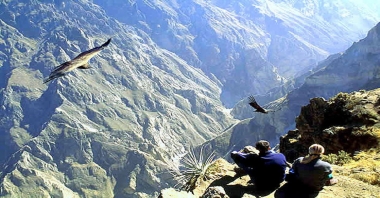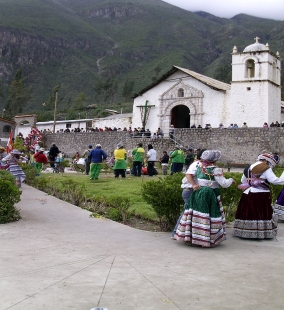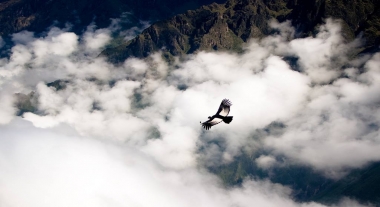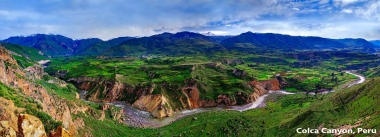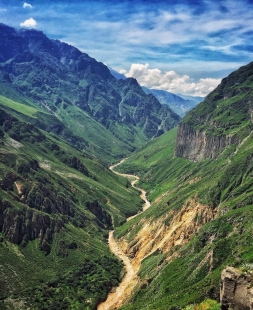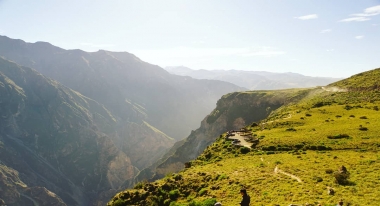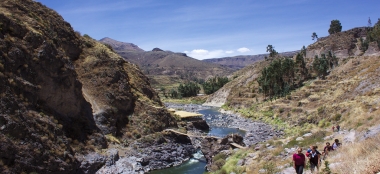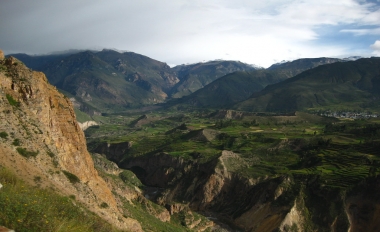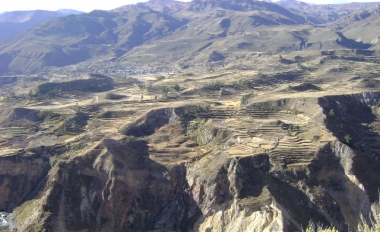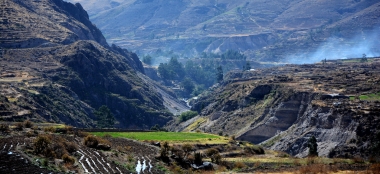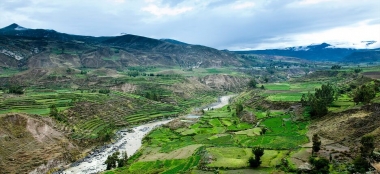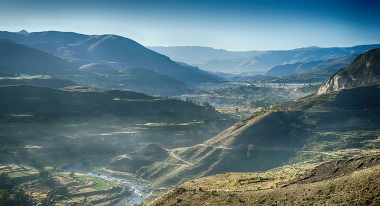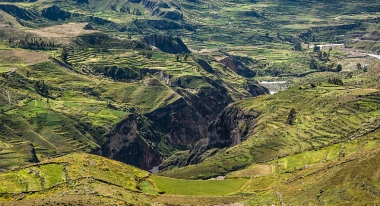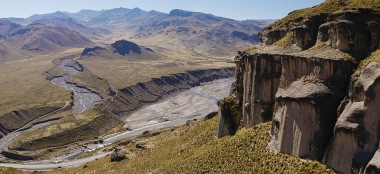The 3,270 m deep Colca Canyon - is located north of Arequipa in Peru. It was once considered the deepest canyon in the world. However, it has since been shown that a neighboring canyon, the Cotahuasi Canyon, is even deeper (3,535 m). Its highest point is 4,350 m above sea level and the Colca River is found in the valley.
About 40 km from Chivay, the first village on the road along the canyon, there is a natural viewpoint (called Cruz del Condor) from which you can see condors hovering taking advantage of the updrafts.
After the town of Chivay, the canyon becomes more and more narrow, the road becomes in places not passable. Some viewpoints over the canyon have been created. We then come across the town of Cabanaconde, from where some treks leave towards the bottom of the canyon, and from the opposite bank to the villages of San Juan de Chucco, Tapay, Malata ... Some of these villages are not there. day still not connected to the road network. Mules are the only means of transport to supply food (and other goods) to these remote places.
At the bottom of the canyon (more than 1,000 meters of vertical drop with Cabanaconde), the village of Sangalle serves as a refuge for trekkers, it is nicknamed the Oasis, some lodges have been fitted out for the hiker to rest before the ascent (1 to 2 h of intense walking). Swimming pools with natural water have been built there. This village is also not connected to the road network.
About 40 km from Chivay, the first village on the road along the canyon, there is a natural viewpoint (called Cruz del Condor) from which you can see condors hovering taking advantage of the updrafts.
After the town of Chivay, the canyon becomes more and more narrow, the road becomes in places not passable. Some viewpoints over the canyon have been created. We then come across the town of Cabanaconde, from where some treks leave towards the bottom of the canyon, and from the opposite bank to the villages of San Juan de Chucco, Tapay, Malata ... Some of these villages are not there. day still not connected to the road network. Mules are the only means of transport to supply food (and other goods) to these remote places.
At the bottom of the canyon (more than 1,000 meters of vertical drop with Cabanaconde), the village of Sangalle serves as a refuge for trekkers, it is nicknamed the Oasis, some lodges have been fitted out for the hiker to rest before the ascent (1 to 2 h of intense walking). Swimming pools with natural water have been built there. This village is also not connected to the road network.



